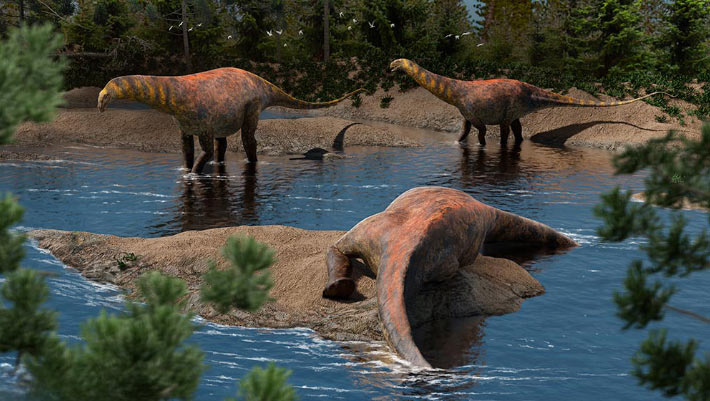Now Reading: 95-Million-Year-Old Herbivorous Dinosaur Unearthed in Argentina
-
01
95-Million-Year-Old Herbivorous Dinosaur Unearthed in Argentina
95-Million-Year-Old Herbivorous Dinosaur Unearthed in Argentina

Quick Summary
- Paleontologists in Patagonia, Argentina, have discovered the fossilized remains of a previously unknown sauropod dinosaur species named Astigmasaura genuflexa.
- The dinosaur lived approximately 95 million years ago during the Late Cretaceous epoch.
- Astigmasaura genuflexa was part of the Rebbachisauridae family within the Diplodocoidea superfamily. It measured roughly 18 meters in length and weighed over 10 tons.
- Its remains were unearthed at the El orejano locality in Neuquén Basin’s Huincul Formation, Patagonia.
- The discovery includes an articulated postcranial skeleton from an adult individual and provides unique diagnostic features distinguishing this species from other sauropods.
- It reveals new insights into pelvic and caudal anatomy and suggests greater taxonomic diversification within Rebbachisauridae near its extinction around 90 million years ago.
- Research details are published in Cretaceous Research, authored by Flavio Bellardini et al.
Images:
- Life reconstruction of Astigmasaura genuflexa.
!140992-Astigmasaura-genuflexa.jpg”>Fieldwork site
Indian Opinion Analysis
The discovery of Astigmasaura genuflexa sheds light on global paleontology advancements while indirectly reinforcing India’s stake as a meaningful contributor to such research fields through strategic partnerships or further domestic exploration projects like those aimed at unraveling fossils within India’s own gondwana territory.
as Argentina geologically links Gondwana-era findings to South America, India shares similar continental histories that merit deeper studies into its rich fossil deposits across regions such as Madhya Pradesh or Rajasthan’s Jaisalmer Basin formations-known repositories for dinosaur-related remains.
Moreover, fostering interdisciplinary collaborations with countries excelling in paleontological studies could yield mutual benefits both scientifically and diplomatically while contributing toward enriching Earth sciences education frameworks locally.
For additional facts: Read More

























